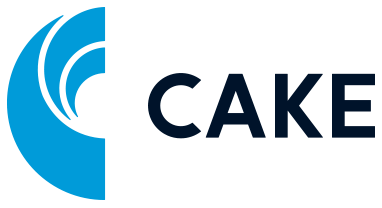Lead distribution: A natural extension of an existing affiliate marketing programme
Lead distribution is a performance marketing process that involves capturing, validating, and distributing leads to advertisers and lead buyers. The purpose of lead distribution is to secure the best price for generated leads.
Adding lead distribution to your affiliate program opens a new revenue stream for you to qualify and monetise leads beyond what’s possible with the traditional CPA model. It simply enables you — as the affiliate network — to activate new options for your advertisers by turning them also into ‘lead buyers.’

To start, look within your existing affiliate network to identify advertisers interested in buying qualified leads in addition to, or instead of traffic. For example, perhaps you have multiple advertisers in the home repair vertical who would like to buy leads of individuals looking to do home improvements. Or, maybe you have another advertiser interested in purchasing finance leads. In both cases, these advertisers can now become your ‘lead buyers.’
You can also expand your partner network to include traditional lead buyers, who are not advertisers, which increases your playing field even more. For example, this could be a debt relief company interested in purchasing leads of individuals who need help getting out of debt.
9 ways to get the most from your lead distribution programme
Following are actionable tips an affiliate network should implement to run a lead distribution program. The key is to use the lead data to your advantage and sell higher-quality leads for the highest prices.
1.Understand the two ways to capture leads – Affiliate networks can either:
- Purchase leads directly from affiliates – Affiliates generate the lead and then directly sell that lead to the network.
- Generate leads through their own network landing pages – They can work with Affiliates to drive web traffic to their landing page, or the network can do their own media buys. The user then converts there and produces a lead to the network. Then, the network takes that lead and sells it to an advertiser/buyer.
2. Optimise landing pages – It’s important to host landing pages that are optimised to capture the most conversions. Include elements such as a catchy, relevant headline and sub-headline, design that aligns with your brand, and a compelling call-to-action (CTA). For form fields, only ask for the minimum amount of information that’s required and important to your business, to avoid deterring individuals from filling out the form.
3. Encourage competition with multiple lead buyers – When you have a pool of lead buyers, it creates competition, and this is one of the biggest advantages of lead distribution over traditional CPA. It’s different from the CPA model where you’re driving traffic to an advertiser’s landing page and hoping they convert.
With lead distribution, the networks have the supply, and the buyers create the demand. This competition often enables networks to get more for their leads because the highest bidder wins the better leads.
There are three general lead-selling approaches:
- Exclusive – If a lead buyer’s contract provides that party with exclusive rights to a lead, then leads go to this buyer and cannot be sold to others.
- Multi-sell – In this approach, leads sold to one buyer must also sell to another buyer. With only a single buyer, the lead cannot sell.
- Hybrid – This model enables a buyer to participate in both multi-sell and exclusive (if no multi-sell partner(s) are available), furthering the likelihood that a lead will be sold.
Here is a bidding example:
- Buyer 1 (Exclusive) – $10
- Buyer 2 (Multi-sell) – $5
- Buyer 3 (Multi-sell) – $6
In this case, as the lead seller you would likely sell the lead to both buyer two and three, since combined the final sale price would equal $11, versus an exclusive sale of $10 to only a single buyer. Typically, buyers are willing to pay more for exclusive deals. Yet, for a multi-sell approach, bidding should go to the highest paying buyers to maximise your profit.
4. Leverage campaign tracking parameters – High-quality leads result in more sales for your buyers and fewer lead returns to you. To identify high- performing lead sources, gather campaign tracking parameters, such as Urchin Tracking Modules (UTM) for a holistic snapshot of the lead acquisition funnel. By combining tracking parameters with anecdotal lead buyer feedback, you can determine crucial insights such as the original lead acquisition source, in this case, most likely your affiliates, how much the lead sold for, and lead quality to measure the true effectiveness of your ad spend.
With these insights, you can invest more in quality lead sources and the affiliates responsible for generating those leads. And quality is key with many verticals, like legal for example, where lead buyers are paying a premium for leads, oftentimes up to $60 -$300 per lead.
5. Validate leads – This critical step, called lead validation, takes place before selling leads to your buyer to mitigate returned leads and confirm they are not from fraudulent traffic sources. Ideally, your lead distribution software should have integrations with third-party tools like Xverify, Neustar, or eHawk that focus purely on lead validation to ensure that the lead information is a real person with valid credentials.
6. Enrich leads – Lead enrichment serves to build richer lead profiles by allowing you to verify, correct, and include additional data on a lead. Typically, prospective leads only like to fill out a maximum of three-five fields on a form. This means you may not receive all of the information needed about the individual, so you can use enrichment tools or a lead-enrichment process such as a call center, to gather more information about the lead to improve the quality. For example, in the lending industry prospective leads are asked for their credit ratings in terms of poor, fair, good, and excellent.
On the backend, you could run credit checks to get the actual credit ratings to improve the overall lead credibility and make them more attractive for buyers to purchase. This garners a higher lead selling price for you.
7. Sell leads swiftly – While searching online, 90% of consumers fill out at least one form per week on average. That’s a lot of leads for multiple buyers, who can compete for the opportunity to win each lead over as a customer.
However, it’s key for the process to move quickly. As the lead seller, using automated lead distribution software enables you to swiftly capture, validate, and distribute leads to the right buyer, which results in an 87% higher conversion rate. On the other side, once the lead is routed to advertisers or lead buyers, they need to continue working fast — 27.5% of leads will go with the company that responds first, while contacting a lead more than five minutes after the lead submission results in a 46% lower qualification rate.
8. Safeguard data security and privacy – With affiliate marketing and lead distribution, both you and your partners handle consumers’ personally identifiable information (PII). In order to avoid fines and ensure the integrity of data collection all partners must comply with regulations, such as the General Data Protection Regulation (GDPR), California Consumer Privacy Act (CCPA), and the Telephone Consumer Protection Act (TCPA). So, keep abreast of the latest updates and consider using tools such as Jornaya and Trusted Form, which can be useful for enhancing your compliance efforts.
9. Learn about and leverage Ping Post – Ping Post is an advanced lead selling method proven to be mutually beneficial for all parties involved. This is how it works. The Ping Post functionality provides buyers with only a ‘lead preview,’ details from a form submission (e.g., lead’s zip code, salary range, case notes, etc.) without the actual contact information. Buyers indicate the amount they’re willing to pay for each lead depending on this partial information. If you choose to sell it to the buyer for their proposed amount, you then post the full lead to the buyer. You as the lead seller make the desired profit margin, while your buyer is satisfied as they set the price.
To learn more about the value of expanding your affiliate network with lead distribution, check out this resource, Better Together: Adding Value to Your Affiliate Program with Lead Distribution.


